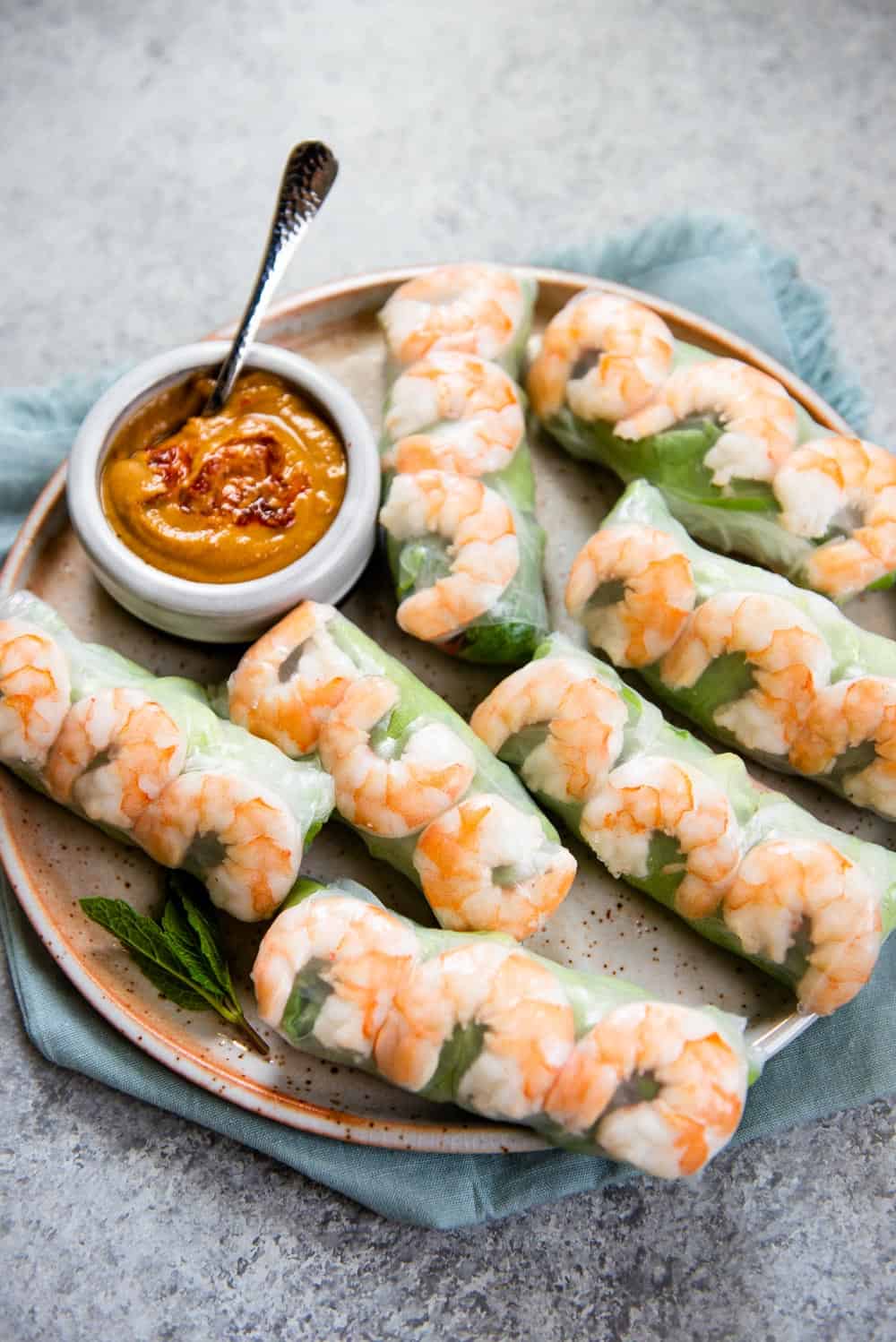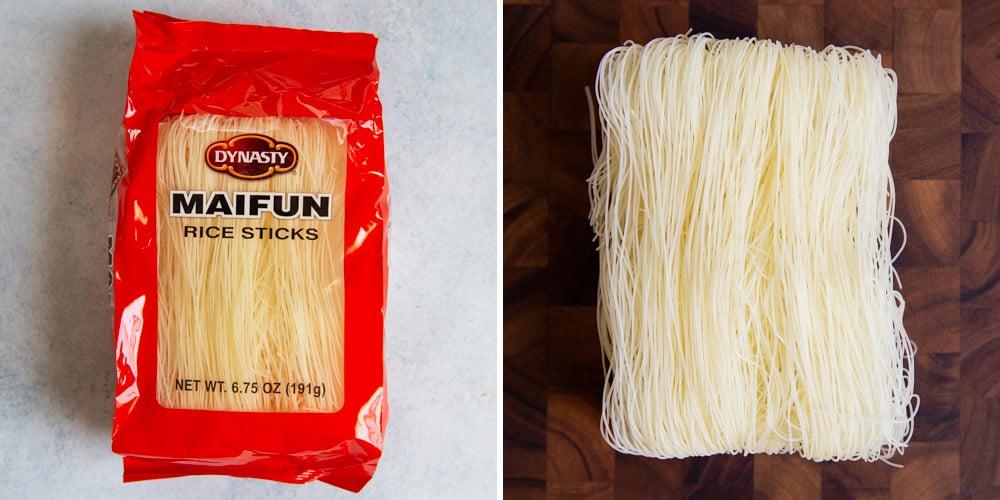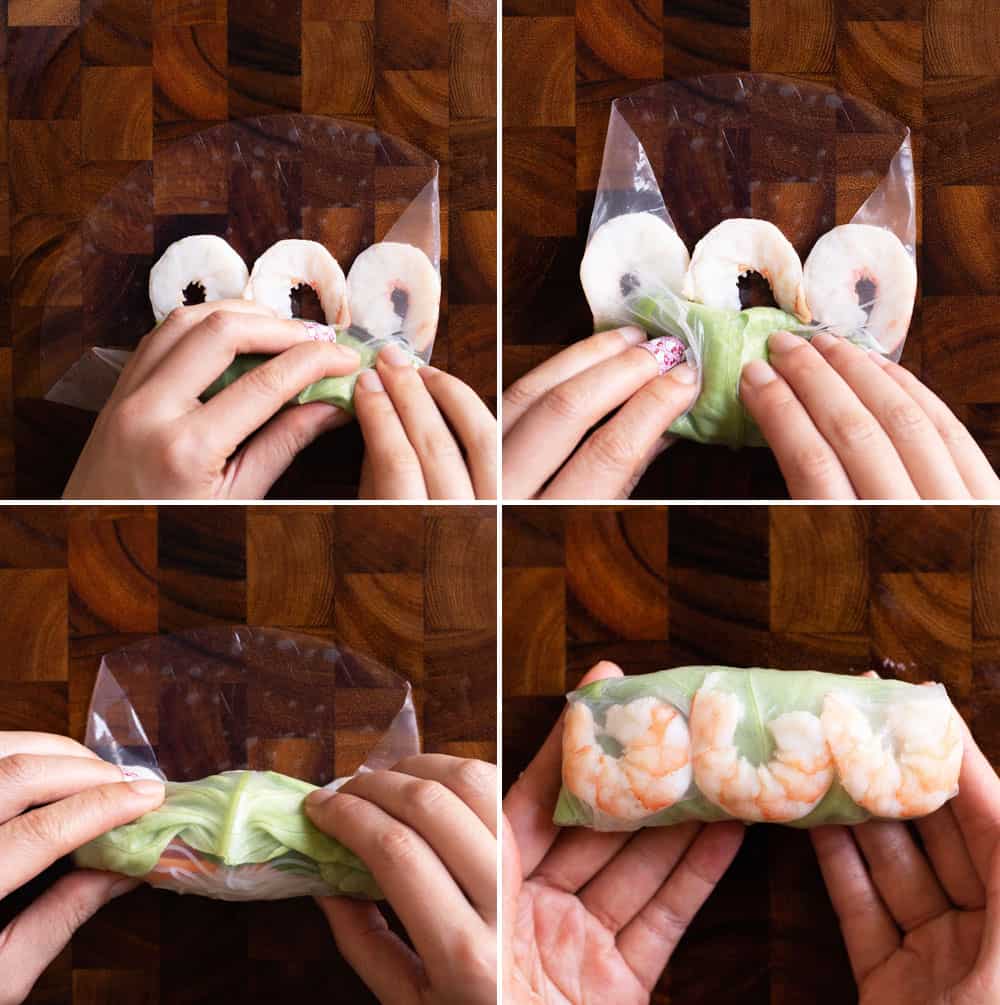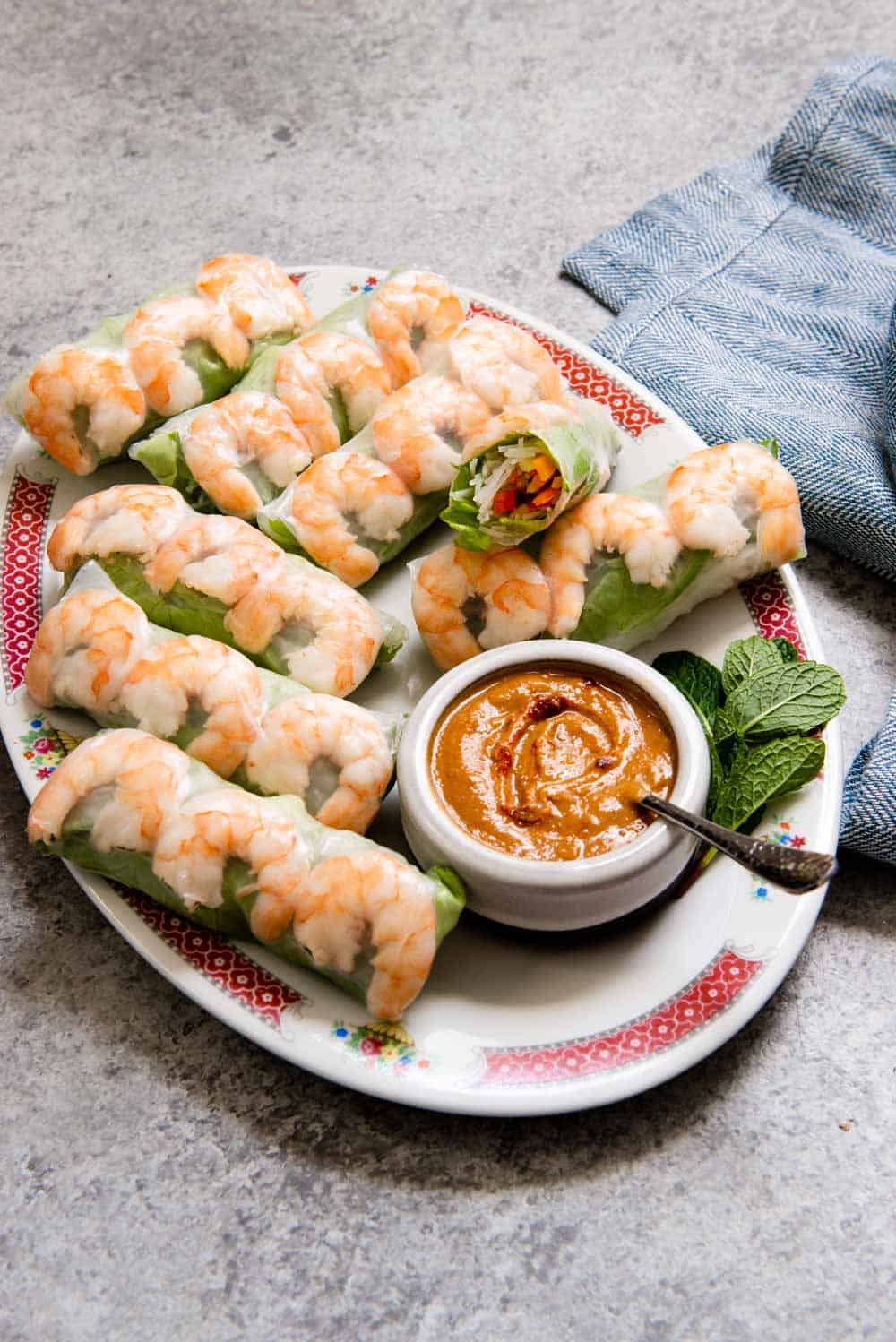Typically, you’ll find Vietnamese spring rolls filled with shrimp, pork vegetables, herbs and rice vermicelli. In this spring roll recipe, I’m primarily using shrimp, vegetables, herbs, and noodles for the filling. Feel free to add or replace ingredients based on your preferences and what’s available to you.
WHAT YOU NEED TO MAKE VIETNAMESE SPRING ROLLS
RICE PAPER (Bánh Tráng)
I like using larger circular rice papers (22cm, about 8.5 inches) because they hold more filling. As an aside, most rice paper sheets are produced in Asia, so you’ll likely see them labeled with metric measurements. Smaller rice paper sheets also work for this recipe, but your spring rolls will be much smaller.
RICE VERMICELLI
Typically, Vietnamese spring rolls are made with rice vermicelli, which are very thin rice noodles. Various manufacturers will call them thin rice noodles, rice sticks, or maifun. One important thing to note is that the cooking time of the noodles varies across brands. Use my recipe below as a guide, but double check the manufacturer’s suggested cooking time.
SHRIMP
Medium-sized shrimp (about 21 to 25 count) work best for spring rolls. I like cooking the shrimp with the shells on because I think the color of the shrimp is more vibrant once cooked. The easiest way to cook the shrimp is to boil them for two minutes. Then, remove the shrimp from the boiling water and let them cool for at least 5 minutes before peeling off the shells.
LETTUCE LEAVES
Many Vietnamese spring roll recipes use lettuce leaves because they help make the rolling process much easier. When you nestle the noodles, vegetables, and herbs inside the lettuce leaf, the filling won’t spread out everywhere as you roll up the spring roll. Plus, the lettuce offers a nice color contrast to the shrimp. I prefer to use butter lettuce because the circular leaves are perfectly shaped for spring rolls. If butter lettuce is not easy to find, feel free to use red leaf or green leaf lettuce. Remember to snap off the bottoms of the leaves to get rid of the tougher stem. The stems can easily poke through the rice paper once the spring rolls are rolled up.
VEGETABLES AND HERBS
Although I like the combination of carrots, cucumber, bell pepper, and mint, use whatever you prefer. Sometimes, I’ll throw in red cabbage, sliced avocado, or basil. The sky is the limit in terms of the ingredients you can use for spring rolls! Make sure to slice the vegetables thinly so that they are easier to chew.
HOW TO MAKE VIETNAMESE SPRING ROLLS
SET UP THE WORK SURFACE
I usually roll spring rolls on top of a chopping board. To prevent the rice paper from adhering to the board, I quickly wet the board by brushing water over it with my hand. After every two spring rolls or so, I will wet the board again. Alternatively, you can lay a damp towel over your work surface and roll the spring rolls directly on the towel. Mama Lin prefers this method because you don’t have to constantly brush water over the board.
VIDEO: ROLLING TECHNIQUE FOR VIETNAMESE SPRING ROLLS
DIP THE RICE PAPER IN LUKEWARM WATER
To soften dry rice paper, quickly dip the rice paper in a bowl of lukewarm water, no longer than a few seconds. Don’t worry if the paper feels stiff when you take it out of the water. The rice paper will continue to soften on the chopping board. If you find that the rice paper is wrinkling and softening too quickly, the water may be too hot. Add some cold water to the bowl.
ADD THE FILLING
Lay a piece of butter lettuce over the lower edge of the rice paper. Then, top the lettuce with noodles, vegetables, and mint. Next, line the shrimp about 1 1/2 inches below the top edge of the rice paper. By leaving a gap between the shrimp and vegetables, the shrimp will look more vibrant in the final roll because they will be covered by only one layer of rice paper.
ROLL THE SPRING ROLL
When you are ready to roll the spring roll, grab the lower edge of the rice paper with your thumbs and pointer fingers, lift, and roll up the spring roll. Use your other fingers to hold the filling together. Continue rolling the spring roll until you reach the shrimp. Then, fold the left and right sides of the spring roll toward the center (see photographs above). Finally, roll the spring roll all the way to the end.
CAN YOU MAKE FRESH SPRING ROLLS AHEAD?
Although you can prepare the filling and sauces up to 2 days ahead, I highly recommend that you consume these shrimp spring rolls within several hours of making them. If you refrigerate spring rolls overnight, the rice paper hardens, making them difficult to chew. You can microwave spring rolls on high for 30 seconds, but the texture won’t be the same as freshly made rolls. Another issue is that the rice paper tears over time over time, especially around the shrimp. For optimal texture and appearance, eat the spring rolls the same day you make them.
SPRING ROLL DIPPING SAUCE
Traditionally, spring rolls are served with nước chấm, a Vietnamese dipping sauce made of fish sauce, chilli, sugar, and lime juice. I have a recipe below for the nước chấm. I slightly prefer using a peanut sauce for this recipe because I love the richness of the peanut sauce contrasting with the texture of the fresh spring roll.








